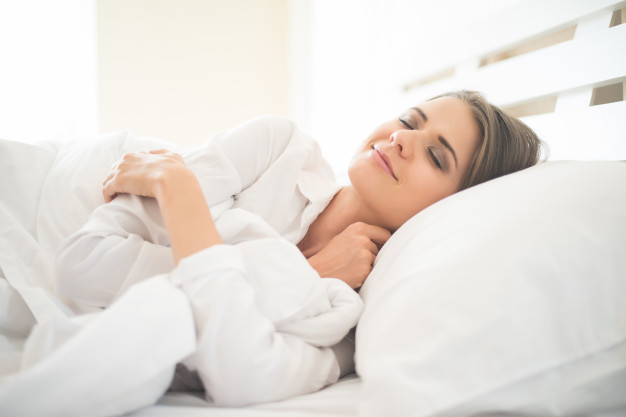We’ve all had the experience of tossing and turning in bed, unable to get some shut-eye. Some may have sleeping disorders like sleep apnea that needs a breathing device to keep the airways open while sleeping. You might have even considered trading in your current mattress and sleep accessories for higher-quality sleep products. But does investing in better pillows and mattresses really lead to better REM cycles?
A recent study commissioned by Amerisleep looked at the spending habits of consumers who wanted to improve their quality of sleep and found that, yes, those who spent more on sleep products often enjoyed better rest at night.
Nearly 50 percent of the study’s participants had shopped for solutions to their poor quality of sleep, but the reasons for sleep-related spending varied. About a third of respondents wanted to battle insomnia, while 20 percent wanted to alleviate neck strain. Gen Xers were most concerned with feeling more refreshed in the mornings, whereas millennials sought out sleep solutions for better overall health and relaxation. Both baby boomers and Gen Xers were more likely than millennials to be concerned with reducing fatigue in their daily life.
The most popular product that all age groups purchased to help them drift off to sleep was a mattress. Sixty-one percent of consumers had ponied up for a new mattress, making it the highest-ranked product, while 51 percent and 48 percent spent on sheet sets and memory foam pillows, respectively. Interestingly, women were 20 percentage points more likely than men to buy new sheet sets. They were also more interested in eye masks and weighted blankets than their male counterparts. Men were more likely to concern themselves with the quality of the bed frame.
Investing in Shut-Eye
The amount of money consumers devoted to sleep accessories varied significantly. Thirty-one percent of study respondents spent $100 or less on sleep-improving purchases, while nearly 25 percent shelled out more than $500. The majority, however, fell somewhere in between, with 44 percent of purchasers spending between $100 and $500 on sleep-related goods.
Gen Xers tended to spend more on sleep-related shopping, whereas millennials and Gen Xers skewed more conservative in their spending. The people willing to pay the most for sweeter dreams? Those who were getting less than six hours of sleep nightly.
Interestingly, those who spent the most on their sleep purchases were the most stressed but also more likely to feel productive and satisfied with their sleep patterns. Those who invested less in sleep products were more likely to characterize themselves as “moderately or somewhat productive” or “not at all productive.”
So what was the most expensive purchase for those looking to sleep better and longer? Fifty-one percent of respondents said the priciest product was a mattress. However, 37 percent also reported that a new mattress was their most effective weapon in battling poor sleep.
Consumers who spent more money on sleep products tended to be more satisfied with their sleep outcomes. Seventy-one percent of those who spent $500 or more on sleep accessories felt they were getting their money’s worth out of their investment.
Evaluating Your Sleep Space
Amerisleep staff writer April Mayer notes that, while most consumers focus on the basics of sleep improvement, such as mattresses and pillows, there is a whole range of products designed to help sleepers make the journey into dreamland. Gadgets like white noise machines and sleep trackers can also be immensely helpful.
The importance of getting enough rest cannot be overstated. Good sleep habits have been shown to improve our overall quality of life and even increase earning potential. So it’s worth evaluating your current sleep situation and recognizing potential areas for improvement. Start by making sure your mattress is still supportive – most mattresses have a maximum life expectancy of 10 years – and ensure that your pillows and sheets are inviting, comfortable, and free of allergens.

